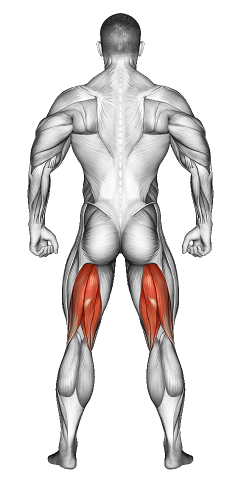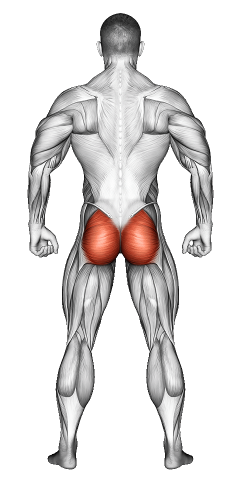Dumbbell Hamstring Curl: Video Tutorial & Exercise Guide

Written By: Claude Michael
Updated: Oct 13, 2024
| Workout | Dumbbell Hamstring Curl |
| Primary Muscle Group | Hamstrings |
| Secondary Muscle Group | Glutes |
| Equipment Required | Dumbbell, Bench |
| Force Type | Pull |
| Mechanics | Isolation |
| Exercise Type | Strength |
| Difficulty | Intermediate |
Dumbbell Hamstring Curl: Video Tutorial & Exercise Guide
- 1.Dumbbell Hamstring Curl: Muscle Groups
- -1.1Primary Muscle Group
- -1.2Secondary Muscle Group
- 2.Dumbbell Hamstring Curl: Step-by-Step Guide
- 3.Dumbbell Hamstring Curl: Overview
- 4.Dumbbell Hamstring Curl: Benefits
- 5.Dumbbell Hamstring Curl: Pro Tips & Advanced Techniques
- 6.Dumbbell Hamstring Curl: Progression Plan
- 7.Dumbbell Hamstring Curl: Frequently Asked Questions (FAQs)
Secondary Muscles Group
Dumbbell Hamstring Curl: Step-by-Step Guide
- Step 1: Lie face down on a bench, with your legs extended and a dumbbell held between your feet.
- Step 2: Engage your core and glutes as you slowly lift the dumbbell by bending your knees. Keep your hips pressed into the bench throughout the movement.
- Step 3: Continue lifting the dumbbell until your knees form a 90-degree angle, squeezing your hamstrings at the top.
- Step 4: Lower the dumbbell back down in a controlled manner, making sure to keep tension on the hamstrings throughout.
- Step 5: Repeat for the desired number of reps, maintaining control and avoiding using momentum.
Dumbbell Hamstring Curl: Overview
The dumbbell hamstring curl is a highly effective exercise for isolating and strengthening the hamstrings. By using a dumbbell, this variation provides additional resistance, helping to target the muscles in the back of the legs more intensely. It's a great alternative for those without access to a leg curl machine, and it can be done on any flat bench.
Dumbbell Hamstring Curls: Benefits
Dumbbell hamstring curls help build strength and muscle mass in the hamstrings, which are essential for powerful leg movements like sprinting and jumping. They also help improve knee stability and reduce the risk of injury, particularly in sports that require explosive lower body movements. Strengthening your hamstrings can also contribute to better balance and posture.
Dumbbell Hamstring Curl: Pro Tips & Advanced Techniques
Form focus: Keep your hips pressed firmly into the bench to ensure you're isolating your hamstrings rather than using your lower back to lift the weight.
Slow and controlled: Avoid rushing through the movement. A slow, controlled tempo will maximize muscle engagement and reduce the risk of injury.
Grip the dumbbell: Make sure the dumbbell is secure between your feet. Use a weight you can comfortably hold without losing control during the movement.
Dumbbell Hamstring Curls: Progression Plan
Beginner
Intermediate
Advanced
Dumbbell Hamstring Curl: Frequently Asked Questions (FAQs)
What muscles do dumbbell hamstring curls target?
+They primarily target the hamstrings but also engage the calves and glutes to a lesser extent.
Can I use ankle weights instead of a dumbbell for hamstring curls?
+Yes, ankle weights can be used if you prefer. However, using a dumbbell typically allows for greater weight and more resistance.
How often should I do dumbbell hamstring curls?
+Include them in your lower body workouts 1-2 times per week to build hamstring strength and balance.
What common mistakes should I avoid?
+Avoid using your lower back to lift the dumbbell. Keep your hips pressed into the bench to isolate the hamstrings effectively.
Share
Don’t Wish for It, Work for It – Join the FlexXP Newsletter Today!
Thank you for signing up for the FlexXP Newsletter!
This site is protected and the Google Privacy Policy and Terms of Service apply.

